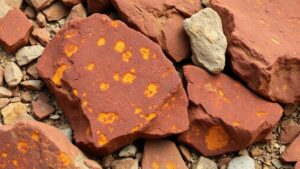The Role of Flood Events in Revealing New Gold Deposits
The Role of Flood Events in Revealing New Gold Deposits
Flood events, often considered natural disasters, play a paradoxical role in the geological landscape of mineral discovery, particularly in the search for gold deposits. This article explores how these events can serve as catalysts for uncovering new gold resources, employing both geological principles and case studies to illustrate this phenomenon.
Understanding Flood Events
Floods occur when excessive rainfall or snowmelt overwhelms the capacity of rivers, lakes, or other bodies of water. Such events not only cause immediate destruction but can also significantly alter the landscape. From a geological standpoint, floods can lead to:
- Erosion of existing soil and rock layers
- Redistribution of sediments
- Formation of new channels and deposition patterns
These changes can expose previously buried geological structures that may contain valuable mineral resources, including gold.
The Geological Mechanism
Gold deposits typically form in specific geological conditions, often associated with igneous or metamorphic rocks. Flood events can enhance the visibility of these formations by:
- Removing topsoils that obscure gold-bearing strata
- Exposing mineral veins through the erosion of rock surfaces
- Transporting gold particles from upstream high-grade deposits and depositing them in new locations
This dynamic rearrangement can provide geologists with newly accessible areas for exploration, thereby facilitating the discovery of gold deposits that may have been undetected prior to a flood event.
Case Studies: Flood Events and Gold Discoveries
Several instances throughout history illustrate how flood events have led to significant gold discoveries:
The Klondike Gold Rush
The Klondike region in Canada experienced heavy flooding during the winter of 1897. The floods exposed new ground by washing away sediment layers, which prompted countless prospectors to stake claims in previously buried riverbeds. It is estimated that over 20,000 prospectors flooded the area, leading to the extraction of millions of ounces of gold as miners took advantage of the newly exposed deposits.
Recent Examples in California
In California, the 2017 winter floods led to extensive erosion in the Sierra Nevada region. As soil was washed away, many small-scale miners reported locating significant amounts of gold in newly exposed riverbanks. In some cases, amateur prospectors used metal detectors in flood-impacted areas, yielding gold nuggets that had been hidden for decades.
Challenges and Concerns
While the correlation between flood events and gold discovery is fascinating, it is crucial to address the challenges and environmental concerns associated with mining in the aftermath of such events. Key issues include:
- Environmental degradation due to increased mining activity
- Displacement of local communities
- Regulatory challenges in managing newly exposed mining areas
Gold mining operations must balance the pursuit of newfound resources with sustainable environmental practices to mitigate damage to fragile ecosystems.
Conclusion and Actionable Takeaways
Flood events can inadvertently provide opportunities for discovering new gold deposits by exposing previously hidden geological formations. The historical examples underline the potential for significant gold finds, catalyzed by natural occurrences. But, stakeholders must remain vigilant about the environmental and social impacts of increased mining activities following floods.
For aspiring miners and geologists, the key takeaways are:
- Monitor regions prone to flooding for potential geological changes.
- Conduct thorough research and environmental assessments before mining.
- Engage with local communities to ensure responsible mining practices.
As the dynamics of nature interplay with human endeavors, understanding the role of floods can lead to remarkable discoveries–albeit with a responsible approach to resource management.



